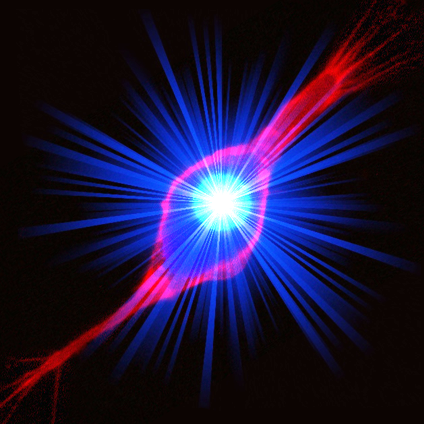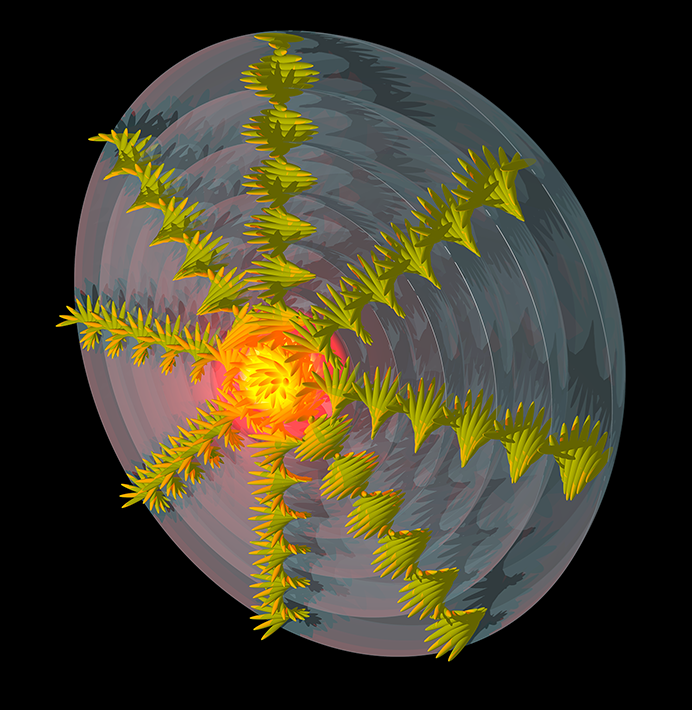Research
Quantum optics

Sources of quantum light today are almost exclusively realized in solid, inorganic materials. An example of such sources are emitters of entangled photons, which are useful for implementing various quantum technologies, such as quantum computing, quantum communication, and cryptography. Entangled photons are generated by laser pumping of special nonlinear crystals. However, a limitation of these materials lies in the fact that, due to their rigid structure, the properties of the entangled pairs are fixed and cannot be changed in a fast and simple way. In our laboratory, we are investigating new sources of entangled photons in liquid crystals, which allow for tuning the quantum properties of photon pairs. We are also developing biological sources of single photons, which are, among other things, useful for studying individual cells.
Biophotonics

We are implanting photonic devices such as lasers and optical waveguides into biological systems. Integration of optical devices with biological systems enables more accurate study of biological processes, diagnostics and targeted medical treatments. We have for the first time implanted a laser into a live human cell. Intracellular lasers can be used as extremely sensitive sensors enabling the measurement of forces acting inside cells, chemical processes, temperature, etc. We have also used the lasers inside cells for tagging of cells, enabling long term tracking of cells inside organisms. We have created a laser made entirely from biological constituents, a live laser.
We have implanted the lasers into various tissues including skin, eye and blood. Lasers can also be made from materials that are already approved for medical use, which will expedite their use for medical purposes. Results of this research have been published in a number of high impact factor journals including Nature Photonics, with the cell laser highlighted on the cover page. Apart from lasers we have also implanted various optical waveguides, which are used to illuminate ad detect light from deep inside human body. This enables light based treatments and diagnostics, which have been till now only limited to the surface of the skin. The results have been published in top journals including Nature Communications and Advanced Materials. Currently we are working on the use of biological microlasers for noncontact personal diagnostics, novel bio imaging techniques and study of processes inside cells.
Link: Lecture on biolasers.
Liquid crystal photonics

Liquid-crystal droplets have been used for the first time as optical cavities and lasers. We have demonstrated tunability of the laser output by electric field and temperature, which is much higher than demonstrated till now in solid state devices. The results have been published in Nature Photonics and highlighted on the journal cover page. We have also demonstrated optical readout from chemical sensors in liquid-crystal droplets. From cholesteric liquid crystals we have for the first time made a laser which is emitting light in all directions. So called 3D laser acts as a coherent point source of light. This result received huge media interest and reached at least 40 million of readers. We have patented the 3D laser in European Union, USA, Japan, China, Russia, India and South Korea. We are continuing the research on novel liquid-crystal-based lasers, which do not only have tunable wavelength, but the beam shape can be tuned almost arbitrarily. The laser beam also carries topological charge, which is coupled to the topology of the liquid crystal structures in the laser cavity.